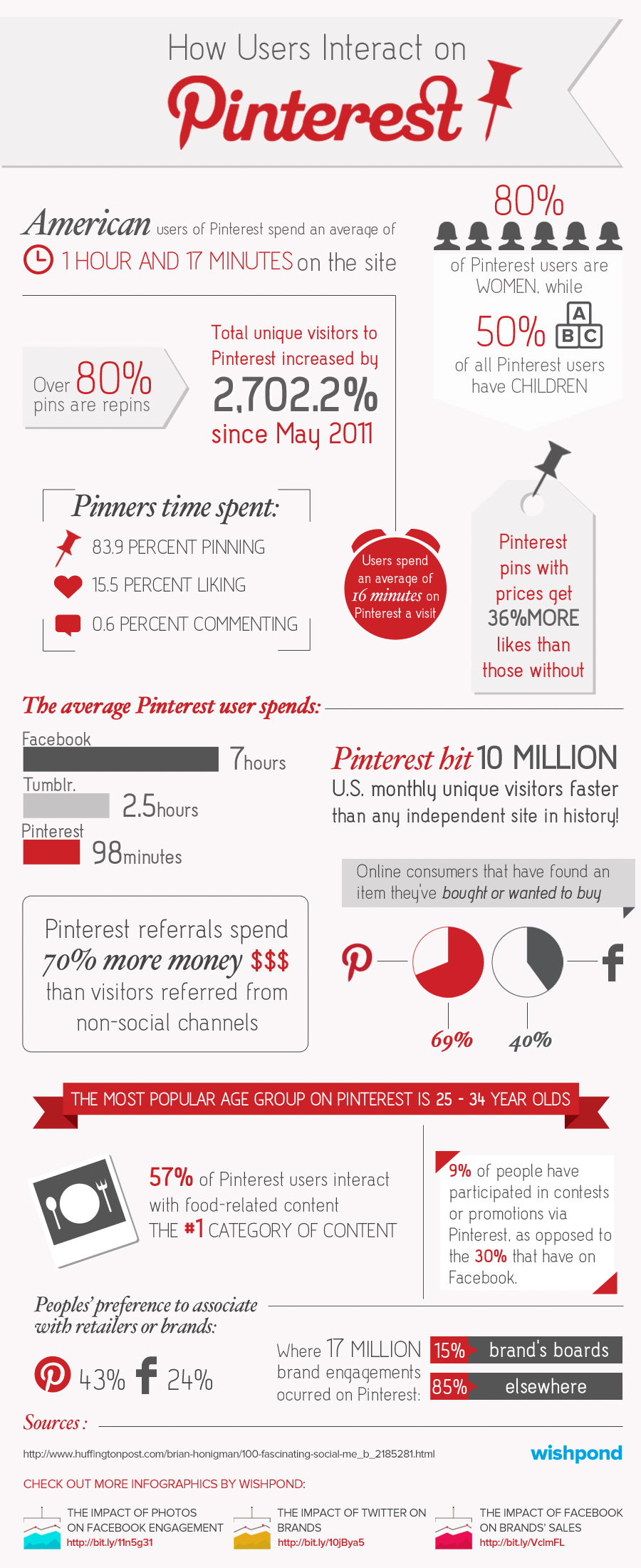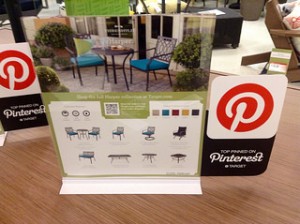 Should your brand be on Pinterest or Facebook? Of course, the best answer is to be on both, but it’s important to understand how people use each of these sites before you prioritize them as part of your brand marketing plan.
Should your brand be on Pinterest or Facebook? Of course, the best answer is to be on both, but it’s important to understand how people use each of these sites before you prioritize them as part of your brand marketing plan.
Wishpond put together a great infographic that highlights the key growth trends, usage trends, and user demographics of both Pinterest and Facebook to give you an overview of how people interact with each site.
You can see the full infographic at the end of this article, but first, here are some key highlights from the data:
- 80% of Pinterest users are women.
- 50% of Pinterest users have children.
- Most Pinterest users are between the ages of 25 and 34.
- The #1 content category on Pinterest is food-related content.
- 57% of Pinterest users interact with food-related content.
- Over 80% of pins on Pinterest are repins.
- Pinterest users divide their time with three main activities: pinning (84% of their time), liking (16% of their time), and commenting (less than 1% of their time).
- Pinterest pins with prices get 36% more likes than those without.
- Of the 17 million brand engagements on Pinterest, 15% occur on brand boards while 85% occur elsewhere.
- Pinterest referrals spend 70% more money than visitors referred from non-social channels.
- 9% of people have participated in contests or promotions via Pinterest vs. 30% on Facebook.
- 43% of people prefer to associate with retailers or brands on Pinterest vs. 24% for Facebook.
- 69% of online consumers have found an item they wanted to buy or actually bought on Pinterest vs. 40% on Facebook.
Based on those statistics, is your target audience for your brand on Pinterest? Do the activities people do on Pinterest and the ways they interact with brands on Pinterest work better for your brand than Facebook?
Pinterest is the fastest growing social site in history, but that doesn’t mean it’s the best one for your brand. Similarly, Facebook might be the most popular social network in the world by far, but that doesn’t mean it’s the best one for your brand. Consider who is using the tool, how they’re using it, and what they want from brands when they use the tool. Do those things match your brand? Can you deliver those additional things people are looking for (or don’t know they want yet)? Choose the tool to match your brand rather than trying to make your brand fit the tool.
You can click on the image below to view the infographic at full size.
Image: Irum Shahid
Susan Gunelius is the author of 10 marketing, social media, branding, copywriting, and technology books, and she is President & CEO of KeySplash Creative, Inc., a marketing communications company. She also owns Women on Business, an award-wining blog for business women. She is a featured columnist for Entrepreneur.com and Forbes.com, and her marketing-related articles have appeared on websites such as MSNBC.com, BusinessWeek.com, TodayShow.com, and more.
She has over 20 years of experience in the marketing field having spent the first decade of her career directing marketing programs for some of the largest companies in the world, including divisions of AT&T and HSBC. Today, her clients include large and small companies around the world and household brands like Citigroup, Cox Communications, Intuit, and more. Susan is frequently interviewed about marketing and branding by television, radio, print, and online media organizations, and she speaks about these topics at events around the world. You can connect with her on Twitter, Facebook, LinkedIn, or Google+.



